Nine Innings: How the Red Sox Can Survive October, Contract-Year Surges and Three Words on Every Team

TWO FACTORS THAT WILL MAKE OR BREAK THE RED SOX IN OCTOBER
By Tom Verducci
Boston manager Alex Cora learned from his experience last year as bench coach of the Houston Astros how to prepare for the postseason. He remembered how the Astros sat down with Dallas Keuchel and Justin Verlander in September to explain how they would “taper” their innings.
“Dallas just goes, ‘Okay,’” Cora said, “and Verlander goes, ‘That’s okay, but in my last start I’m going seven innings and throwing 120 pitches.’ He knew how to get himself ready.”
Verlander tuned up for October with an 11-strikeout, 110-pitch gem.
Now Cora is hoping the same preparation works in Boston with Chris Sale and David Price, who will start Games 1 and 2 of the American League Division Series against the wild card winner. Bothered by a sore shoulder, Sale has thrown only 12 1/3 innings since July 28. Cora has him scheduled to “air it out” Wednesday in his last regular season start.
Order your copy of SI's Red Sox-Yankees commemorative issue now!
Baseball has changed for the better when it comes to how pitchers are used. It’s not just the data that clubs use to protect them. It’s also the medical community. Cora revealed that Boston’s medical professionals are as important in determining workload (when pitchers pitch and for how long) as are the uniformed staff and the analytical experts.
“The medical experts told us that when you overuse pitchers it is reflected three weeks later in their performance,” Cora said. “There’s actually a lag time of three weeks. We look closely at all that stuff. We’ve been very careful in these last two weeks with their usage.”

Boston is the 25th team in the World Series era to win 105 games or more. Only two of those teams failed to win a pennant: the 1998 Braves, who lost in the NLCS to San Diego, and the 2001 Mariners, who lost in the ALCS to the Yankees.
The ’98 Braves and ’01 Mariners are two of the eight teams that won 105 games since divisional play began in 1969. Four won the World Series (1970 Orioles, 1975 Reds, 1986 Mets, 1998 Yankees) and two lost the World Series (1969 Orioles, 2004 Cardinals).
So it’s been 14 years since we’ve seen a team with 105 wins in the postseason—which means you have to throw out your preconceived notions about what wins in October. Baseball has changed drastically since 2004 when the Red Sox and Cardinals met in the World Series. Back then both clubs featured five starters who made at least 28 starts and threw at least 175 innings.
The game is much more about bullpens now—and specifically, bullpens that can keep the ball out of play with swing-and-miss power arms.
Even though Boston has been the best team in baseball, and features a dynamic offense that stopped taking strikes the way it did last year and now hammers early and often, its October fate comes down to two issues that have been missing in the second half:
1. Sale has to pitch deep into his starts.
2. The bullpen needs multiple reliable options and to quit walking so many batters.
This Boston team features only two starters who pitched the 162 innings required as a qualifier, Price and Rick Porcello. Sale might have contended for the ERA title if his innings were not tapered so harshly this month. “Doesn’t care,” Cora said about Sale losing qualified status. “Not that dude. He’s about winning.”
Old cranks might lament the days when pitchers didn’t throw 250 innings, but that doesn’t make sense in today’s game, not when pitchers throw as hard as they do and when throwing your “kill” pitch is required more often because hitters sell out for home runs more often. Starters must bring a reliever’s mentality to the mound.
With that in mind—and because the amateur and professional markets have become so good at training pitchers, leading to massive inventory—teams no longer need to keep sending their starters to the mound every fifth day.
This year pitchers made only 41.3% of their starts on four days of rest or less—a record low. The 2011 season marked the tipping point when four days was no longer “regular” rest—it was the first time in major league history such starts made for less than 50% of all starts.
Take a look, in 10-year increments over the past 40 years, how teams have moved toward giving their starters more rest:
MLB Starts on Four Days or Less of Rest

As starters pitch less often, and chew up fewer innings, relief pitching has become more important. This holds true in October, as well. It’s easy to think the Astros won the World Series because their starting pitchers carried them. Actually, their starters threw less than six innings in half of their 18 postseason games. Manager A.J. Hinch made 52 pitching changes, which works out to using three relievers per game.
Everybody loves to talk about starting pitchers, because that’s how we grew up and the next day’s starter is always a story in the news cycles favored by the media. But to win the World Series now you’re going to have to win games decided by bullpens.
Relievers now win almost as many playoff games as starters. Again, here’s a snapshot in 10-year intervals that tells you how the rules of engagement in October have changed:
Playoff Games Won by Bullpen

Let’s look just at World Series games in the past three years:
World Series Games, 2015-17

Now you know why the Oakland A’s, with baseball’s best bullpen in the second half (3.17), are a handful, and why the Milwaukee Brewers, the only team with five relievers that average 10 strikeouts per nine innings, are nearly as good a bet to win this tournament-style baseball as are the Red Sox.
Boston’s bullpen in the second half has posted a 4.03 ERA (16th in the majors) with 105 walks (fourth most). Too many walks in the second half put the Red Sox 17th in bullpen WHIP and 21st in bullpen strikeout-to-walk rate.
As much as Cora needs Sale and Price at full health, he also needs at least two reliable bullpen arms to get the ball to closer Craig Kimbrel. The Red Sox are counting on Matt Barnes to be one of those guys. Barnes is no lock. He has made one appearance since missing two weeks with left hip inflammation. Here are Cora’s choices:
Joe Kelly: A classic case of why talk about having a “great arm” is overrated. The average major league hitter bats only .231 against pitches 98 mph and greater. But when Kelly throws 98 mph and faster, batters hit .300.
And this also is problematic for a late-inning reliever: Kelly is much worse with runners on (.278 batting average, .724 OPS) than with the bases empty (.200 and .619).
Matt Barnes: His fastball/curveball combo is wicked when he gets ahead (.090). But he has a major flaw: he walks too many batters—12% of the batters he has faced, well above MLB average of 8.1%.
Ryan Brasier: At 31 years old, Brasier is a nice story. He has pitched in 398 minor and foreign league games and is pitching for his fourth organization (Angels, A’s, Hiroshima Carp, Red Sox). A typical power reliever (fastball/slider), Brasier is simply an unknown quantity. When Cora gave him the ball at Yankee Stadium last week rather than having a lefty turn around Neil Walker, Brasier hung a slider. Game over.
Steven Wright: Here’s your wild card reliever. He’s not your typical knuckleball pitcher who makes you sweat coming out of the bullpen. Over the past two years, covering 74 innings, Wright has not allowed a stolen base and has thrown only one wild pitch. But one big red flag is control; he has walked 16 batters in 26 relief innings this year.
Nathan Eovaldi: Okay, great power arm, but he’s made only eight career relief appearances, just four since 2011.
Heath Hembree: He’s given up 10 home runs in 57 1/3 innings, has a 4.40 ERA and has allowed an OPS of .895 with two outs and runners in scoring position. That’s not a high leverage pitcher.
Boston’s win total puts an added degree of pressure on them heading into the postseason. This is only the 24th time a team entered postseason play with 105 wins or more (the 1904 Giants are not included, as the World Series was not played that year). But to draw comparisons to teams long ago like the 1912 Red Sox is a stretch.
This is the first time in 14 years a team with so many wins chased the World Series, the first time in the two-wild card format, and the first time since bullpens decide so many games.
THREE WORDS TO DESCRIBE EVERY TEAM'S SEASON
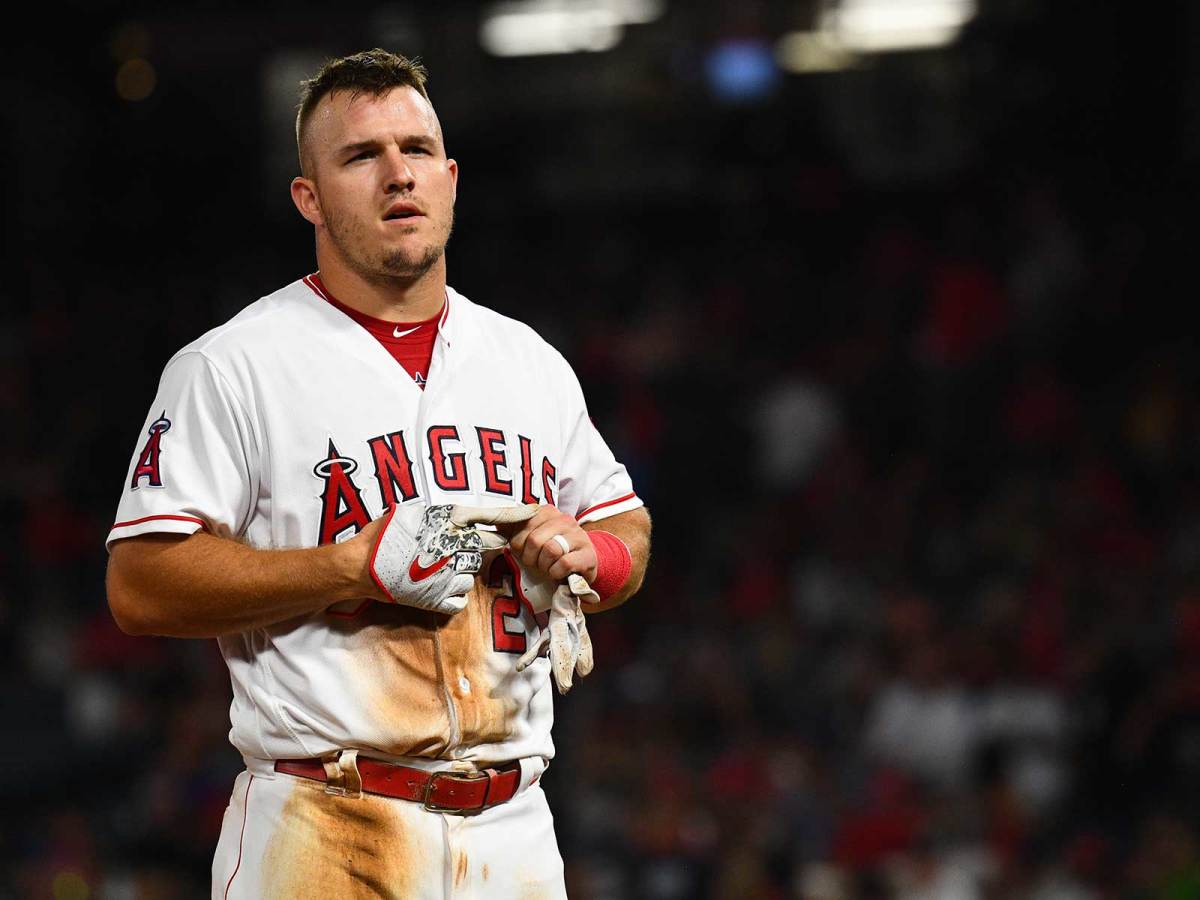
By Jon Tayler
A far better writer than I once noted that brevity is the soul of wit (albeit in the middle of a 73-word sentence). William Shakespeare clearly never had to summarize a 162-game Major League Baseball season, though. How do you quickly describe all the highs, lows and creamy middles of six months’ worth of home runs, strikeouts and cup adjustments? And how can you provide a concise writeup of each team’s efforts from Opening Day through this final week of September? With that in mind, I tried my best to follow the Bard’s advice and give you a simple three-word roundup of the year for all 30 clubs, from the tankers to the contenders.
Angels: Trout remains alone
Astros: Steady all season
Athletics: Unexpected and fun
Blue Jays: Free Vlad Jr.
Braves: No early fluke
Brewers: Strong albeit shaky
Cardinals: The dead rise
Cubs: Still NL’s best
Diamondbacks: Close, no cigar
Dodgers: Found form late
Giants: Aging, hurting, declining
Indians: Should be better
Mariners: Same old story
Marlins: Pointless on purpose
Mets: Disappointing and messy
Nationals: Inexplicably not good
Orioles: Historically, laughably putrid
Padres: Pardon our dust
Phillies: Out of gas
Pirates: Confusing, cheap, mediocre
Rangers: An ugly collapse
Rays: Cost-efficient contention
Reds: Another lost year
RedSox: Dominant and favored
Rockies: Somehow contending late
Royals: Abandon all hope
Tigers: The rebuild begins
Twins: Promise gone bust
WhiteSox: 2020 the goal
Yankees: Inconsistent but dangerous
FIVE PLAYERS WHO WILL CASH IN AFTER CONTRACT-YEAR SURGES
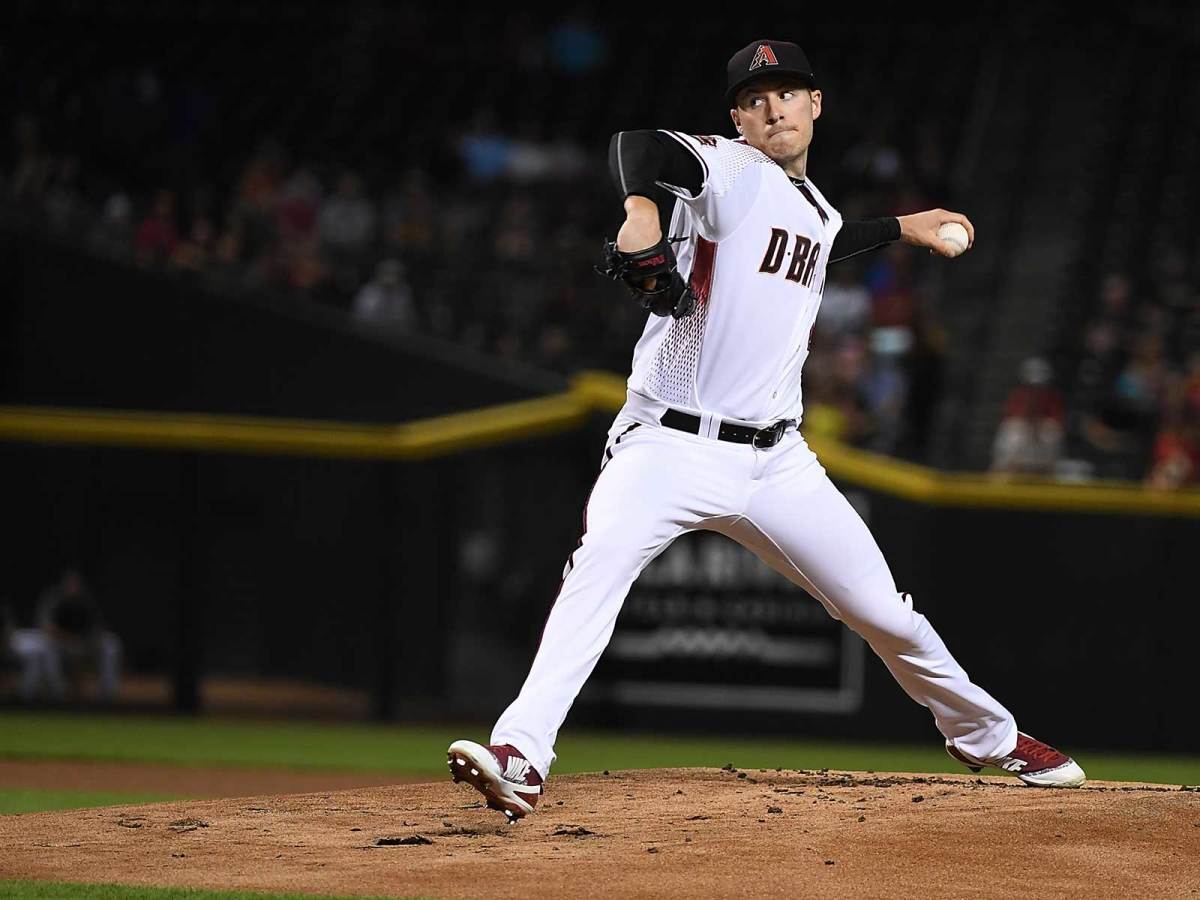
By Gabriel Baumgaertner
Jed Lowrie: With a career batting average of .262 and lifetime OPS+ of 105, Jed Lowrie hasn’t a remarkable hitter but he’s always been capable. A season-long starter in just four of his eleven seasons between stops in Boston, Houston, Oakland, back to Houston then returning to Oakland, Lowrie’s long had decent pop and a slick (if inconsistent) glove in the middle infield. It’s hard to believe that Oakland expected the 34-year-old shortstop to be one of the primary catalysts of their stunning turnaround in 2018: Lowrie already has a career high in home runs (21), RBIs (94) and is currently tied for his best mark in OPS+ (120). Lowrie didn’t maintain his torrid pace to begin the season (he hit .344/.404/.596 with nine homers over the first 37 games of the season, but remained a viable weapon throughout the course of the season. While he won’t make an enormous amount on the free market, he should get a high average annual salary over a two- or three-year contract.
PatrickCorbin: He’s likely going to be an ace for the team that signs him. The 29-year-old logged a fabulous season in Arizona, shrinking his ERA from 4.03 in 2017 to 3.23 this year, his walks from 61 to 47, his homers from 26 to 15 all while boosting his strikeouts per nine innings rate from a solid 8.4 to an outstanding 11.2. It’s the perfect contract year for any starting pitcher, and there is a relative lack of wear on his arm for his age (940 ⅔ innings over six years). Even if the big money will be flowing to the likes of Bryce Harper and Manny Machado, Corbin will be a starter who should see a nice payday.
AdamOttavino: He’s one of the craftiest relievers around and has an opportunity to take his possessed slider out of the thin air of Coors Field. Honestly, just look at these pitches.
Adam Ottavino, Filthy 81mph Slider (for ball 4). 😑🤖 pic.twitter.com/6n6oRczV4H
— Rob Friedman (@PitchingNinja) September 2, 2018
A different view of that Adam Ottavino slider to Dansby Swanson from last weekend. 😳 pic.twitter.com/egzBYsyApM
— Rob Friedman (@PitchingNinja) August 22, 2018
Presumably, the Rockies would prefer to re-sign Ottavino, but they gifted three enormous contracts to relievers (Wade Davis, Jake McGee and Bryan Shaw) last winter. Don’t be surprised if Ottavino heads home to New York City to join the Yankees’ army of relievers.
CharlieMorton: Simply put, if Morton doesn’t retire, he’ll receive a nice payday. Perhaps he’ll want to stay with the Astros on a one-year deal, but his big velocity and strong season will play well for the many teams looking for stopgap starters. In the three-true outcome era, a 10.8 K/9 will get you paid. He just needs to promise his next employer that he’ll cut down on the walks (3.5 per nine innings).
J.A. Happ: Happ will continue to be unremarkably remarkable for his next team to the tune of a league-average contract of, say, three years, $42 million. The soft contact he’ll induce all while barely exerting himself will translate into decent money as he’ll (again) make at least 25 mostly effective starts.
ROUNDTABLE: WHAT'S YOUR BIGGEST TAKEAWAY FROM THE 2018 REGULAR SEASON?
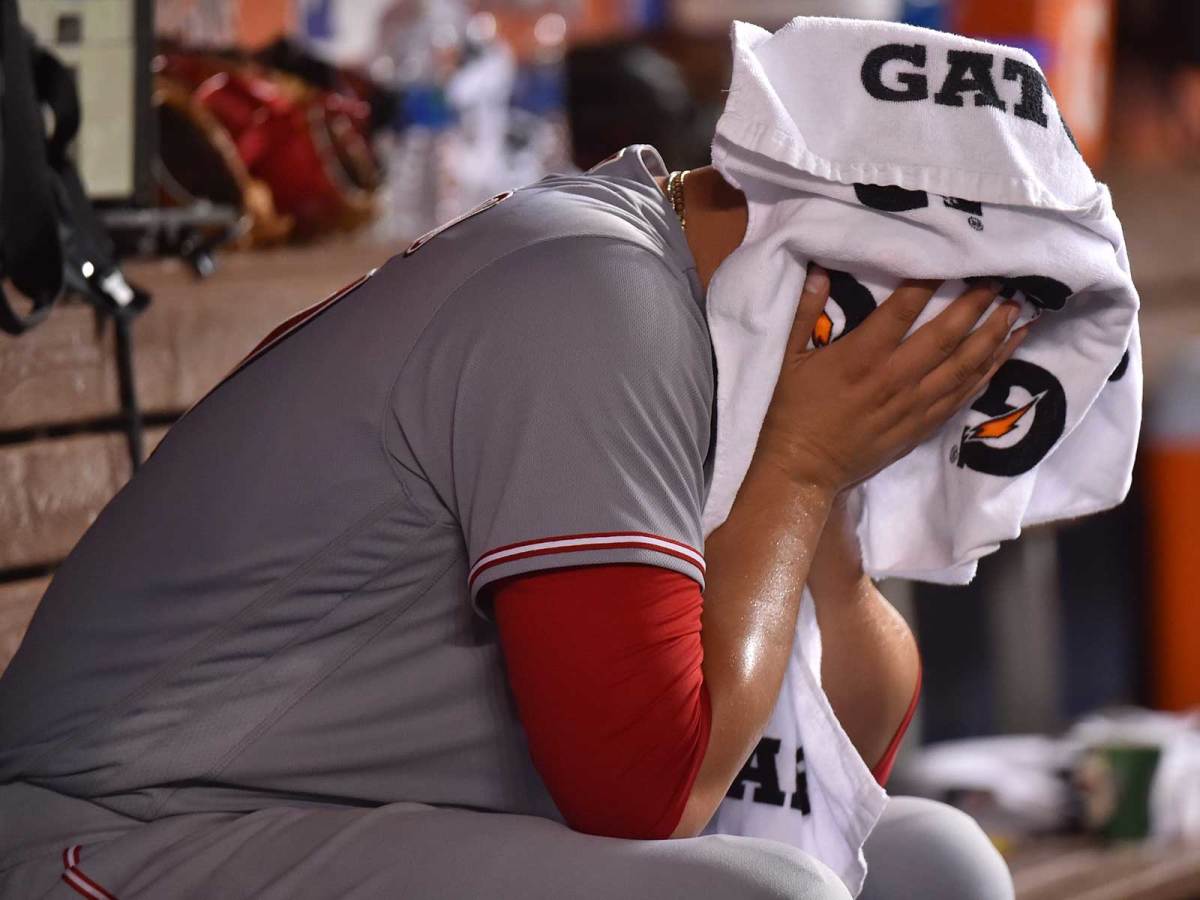
Emma Baccellieri: How grueling it can be to watch a season with so many terrible teams. Symmetry dictates that there are always going to be winners and losers, of course, but when this many squads are built to lose, right from the start? It’s not good for anyone—certainly not right now, and very possibly not later, either. After all, one strategy can only work for so many teams at one time. Not everyone who spent this year on the basement floor should be able to say that they’ll be celebrating in, say, 2021. The White Sox, Orioles, Marlins, Reds, Padres and more have made this season tough.
Gabriel Baumgaertner: There needs to be some reform for the playoff seeding. The conversation is a more robust one than is fit for a roundtable answer, but I’ll argue this much: The Tampa Bay Rays should not be out of the playoffs when they’d be leading or within a half-game of every NL division and tied for the AL Central lead. Divisions ebb and flow, but some teams need to be given a chance, even if that means adding an extra playoff game or series.
The Untold Story of the Yankees' Stunning Rally in '78
Connor Grossman: It's easy to dog teams mired in years-long rebuilds, a toxic phase that allows owners to save money by paying minimal salaries, making a concerted effort to lose and netting high draft picks. But lengthy losing spells eventually allow for can't-miss stories like we've seen with the Braves and A's (with an honorable mention to the Phillies and Rays). To be clear, I'm not endorsing perpetual rebuilds. But both Oakland and Atlanta emerging from a cave of baseball irrelevancy after three years is undoubtedly entertaining and beneficial to baseball's parity. My takeaway is that in the Age of Rebuilds, we're primed to see a couple of teams each year dominate in a way we didn't see coming. Looking at you in 2019, Reds and White Sox.
Jon Tayler: The middle is truly gone in baseball. By the end of the season, there will likely be only five teams between 81 and 85 wins. Compare that to the 13 teams already below .500 (with a handful more who could join them there after the final week), and the eight that are locks for 90 or more losses—similar numbers to last year. If you’re not a World Series contender in today’s MLB, then you might as well bottom out, intentionally or not. This stratification of the game can only hurt competitive balance and continue to depress attendance. It’s an ugly sight; it’s too bad, though, that the league doesn’t seem to care about the bevy of teams that simply aren’t trying.
ALLEN WEBSTER, JEFF MATHIS AND A REMATCH THREE YEARS IN THE MAKING

By Emma Baccellieri
A gap of three years between major-league appearances is long enough to be brutal, yet not nearly long enough to be remarkable. It’s an unexceptional amount of time to spend in upper-minor-league purgatory, just a sliver of the all-time record hiatus. (That would be 22 years, from Paul Schreiber.) But such a stretch is always personally costly, if not at all otherwise notable. For Allen Webster, it was long enough to be forced from the rotation to the bullpen, to pinball between Double-A and Triple-A, to play a bit in Korea. It was long enough for Pittsburgh to purchase his contract from Arizona and then for him to sign as a free agent once with the Texas Rangers and once with the Chicago Cubs. It was long enough for any of his residual prospect luster—whatever remained, at least, after a disastrous debut in 2013—to fade as the surface underneath bleached and washed out.
Webster’s last appearance before his years away was as frustrating as anything he’d face in the seasons to come. He’d made just five major league starts all year, none of them good, and so he’d recently been jettisoned to relief. The Diamondbacks were losing, 7-2, in one of the final games of the season. They gave him the sixth inning. It went poorly. Webster recorded two quick outs before allowing a home run, then another; Arizona lost, 21-5. It was October 2, 2015. Until last week, it was his last time on a major league mound.
A Journey Through the Legendary 1978 Race Between the Yankees and Red Sox
On October 3, 2015—in a different game, between two different teams—there was another baseball event that now can be seen as ever so slightly noteworthy with the benefit of three years’ hindsight. Miami’s Jeff Mathis hit a home run, which was remarkable enough for a guy whose career slugging percentage was then .306; more importantly, he hit that home run on the first pitch that he saw. Like most veteran catchers, Mathis was not (and is not) kept around for his bat. Behind the plate, he’s expected to provide quite a bit. At the plate, he’s expected to provide just what anyone would ask from a backstop known for his game-calling and defense, which is to say just about nothing. As low as those expectations are, though, Mathis has often failed to meet them. Through thousands of major league plate appearances across a decade and a half, he’s statistically been half of the average hitter. For Mathis to be certain about a pitch, and to be right, takes an awful lot. But so he was on October 3, 2015. Until last week, it was his last first-pitch home run.
Last week, Webster made his way to a big-league mound—finally, again, after wearing out all those tracks from one organization to another, across the country and across the ocean, trying to find his way back. Just like last time, he was at Chase Field. Unlike last time, he was a visitor. The Cubs were losing, 7-0, and they’d given him the eighth inning. He was facing the bottom of the order; the first batter was an easy pop-out, and the second was an easier ground-out. The third singled. But the fourth? The fourth was Mathis.
For either, at this point, it takes a lot both to be certain about a pitch and to be right. Webster’s fastball was inside. Mathis was certain, and he was right:
WHAT TO WATCH FOR IN THE SEASON'S FINAL WEEK
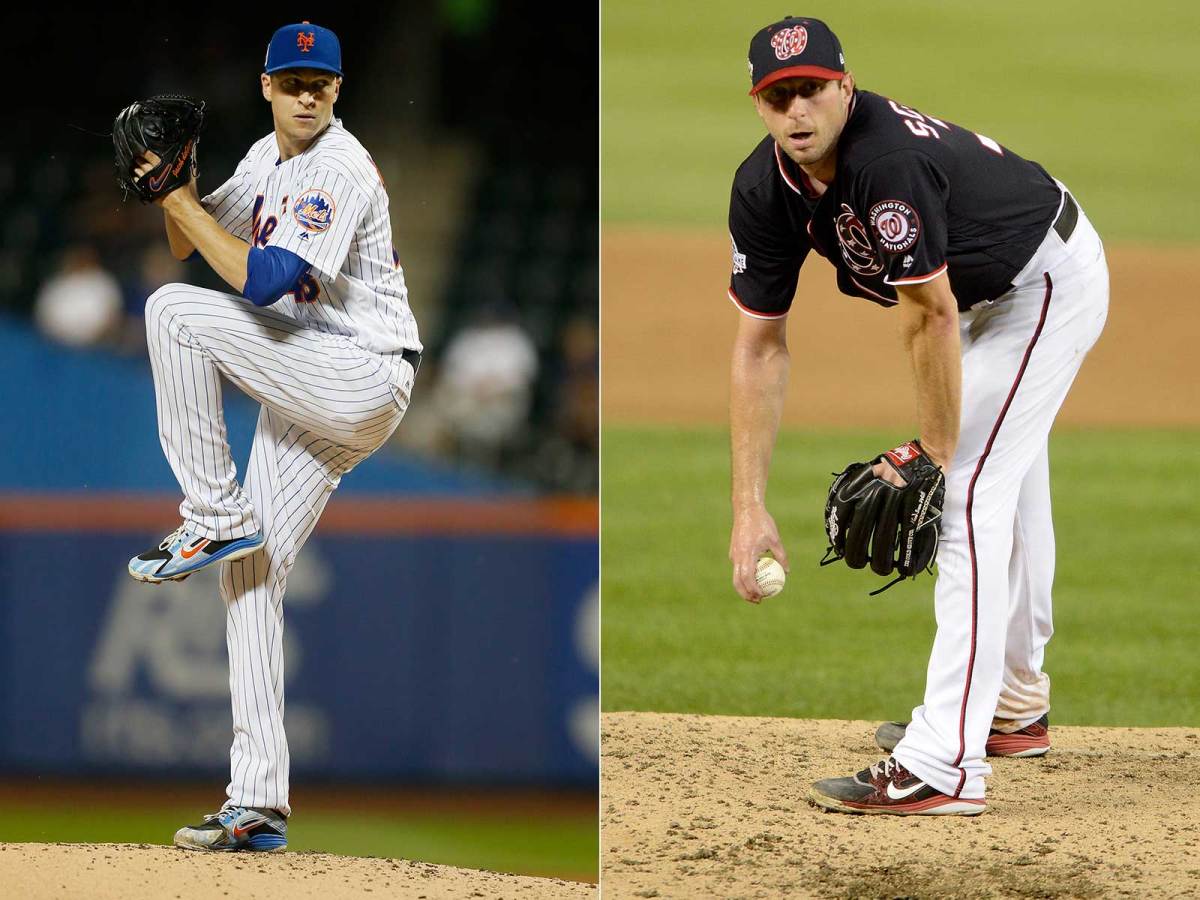
By Michael Beller
Hitters to Watch: The MVP Candidate
With one week left to play, there are 10 or so players in the two leagues combined who could win an MVP Award. The AL MVP race should go down as one of the best award chases in MLB history, with Mookie Betts, Mike Trout, Alex Bregman, José Ramírez, J.D. Martinez and Francisco Lindor all in the mix. The NL contenders aren’t having quite as gaudy individual seasons, but Javier Báez and Christian Yelich lead a race that also includes Nolan Arenado, Lorenzo Cain and Paul Goldschmidt. The national narrative seems to favor Betts in the AL, with Baez and Yelich nearly even in the NL. Given the seasons these players are all having, there's no wrong choice in either league.
The bet here is that Betts and Báez will take home the hardware, but it could easily be Bregman and Yelich. Or Ramírez and Arenado. Or Martinez and Cain. And perhaps the greatest feature of both races is that they’re so close that any of the contenders could secure the award with a huge final week of the regular season, with an NL Central title hanging in the balance between the top-two players in the NL, as well.
Pitchers to Watch: Chris Sale, Blake Snell, Jacob deGrom and Max Scherzer
The Cy Young races are likely down to these four players, with two apiece in either league. In the AL, it feels like Sale has to break through sooner or later, but his DL stint could cost him. While Sale made one start between July 27 and September 11, Snell took the reins in the AL. He put up a 1.42 ERA, 0.82 WHIP and 52 strikeouts in 38 innings in the window above, going 6-1 over seven starts. Snell enters the last week at 20-5 with a 1.97 ERA, 0.97 WHIP and 200 strikeouts in 169 innings. Sale has been essentially just as good, but has fewer wins (12) and a higher ERA (2.00) than Snell, though he has a ridiculous 0.85 WHIP and 229 strikeouts in 153 1/3 innings. The Red Sox will get Sale one more start on Wednesday to keep him on track before the postseason. Snell will make his last start of the season against the Blue Jays over the weekend.
White Sox Broadcaster Ken 'Hawk' Harrelson Works Last Game in Booth
In the NL, deGrom may cap the best individual season of his career with a Cy Young Award won in the unlikeliest of circumstances. He's just 9-9, but leads the majors with a 1.77 ERA to go along with a 0.94 WHIP and 259 strikeouts in 209 innings. Scherzer is having another Scherzerian season, leading the NL with 17 wins and a 0.92 WHIP, and has an MLB-high 290 strikeouts. His 2.57 ERA is nearly a full run higher than deGrom’s, but that says more about deGrom than it does about Scherzer. Both pitchers are deserving of the award, and history will be made no matter what. Either deGrom will take it with the fewest wins ever for a Cy Young winner, or Scherzer will win his third straight Cy. DeGrom’s final start is scheduled to come against the Braves on Thursday, while Scherzer will take the ball for the last time this season against the Marlins on Tuesday.
Series to Watch: Brewers at Cardinals, Monday through Wednesday
This is the only series of the week that features two potential playoff teams, neither of which have clinched a berth. The Brewers and Cardinals start the final week of the season in the NL’s two Wild Card spots, with the former still well within striking distance of chasing down the Cubs and winning the NL Central. The Cardinals are 1 1/2 games ahead of the Rockies for the second Wild Card, and have the tougher schedule to end the season.
After hosting the Brewers, the Cardinals head finish the season with a three-game series against a Cubs team that still may need a win or two to clinch the NL Central. The Rockies host the Phillies and Nationals to end the year. Neither team is a pushover, but that’s clearly the easier week (at least on paper). The matchups for the Milwaukee-St.Louis series are Chase Anderson against Jack Flaherty, Gio Gonzalez against Austin Gomber and Jhoulys Chacin against John Gant.
ICYMI: VICTOR MARTINEZ HANGS 'EM UP
No. 41, Victor Martinez. #ThanksVMart https://t.co/nvcGIOhwOP
— Detroit Tigers (@tigers) September 23, 2018
Tigers DH Victor Martinez called it a career on Saturday afternoon in Detroit, wrapping up his 16-year tenure with a standing ovation as he exited the game after beating out an infield single. The 39-year-old was once regarded as one of the best-hitting catchers in the game, especially in his time with the Indians (2002-09). Martinez earned a spot on five All-Star teams and put up one of his best seasons at 35, finishing second in the AL MVP vote in 2014 with 32 homers, 103 RBIs and a .335/.409/.565 triple-slash line.
The Tigers inked Martinez to a four-year, $68 million pact following that season, but he never really approached 2014 levels again. Never mind that the Tigers are still on the hook for $154 million for the next five years with Miguel Cabrera. Here's to a quality career, V-Mart.
TWEETS OF THE WEEK
Jacob deGrom: 1.78 ERA, 251 K, 10 HR
— Mark Simon (@MarkASimonSays) September 22, 2018
Last pitcher to go sub-1.80 ERA with 250 K and 10 or fewer HR:
Walter Johnson, 1912 Senators
ERA wasn't even an official stat in the AL yet!! (became one in 1913)
deGrom's got a shot to do that!
Won division title (or pennant pre-1969) immediately after 3 straight seasons of 90+ losses
— James Smyth (@JamesSmyth621) September 22, 2018
1967 Red Sox (3 seasons)
1991 Braves (4 seasons)
2008 Rays (10 seasons)
2018 Braves (3 seasons)
The Giants are likely to not have a 20-HR player this season. Their last was Brandon Crawford in 2015.
— Sarah Langs (@SlangsOnSports) September 23, 2018
Since 2016, there have been 320 individual 20-HR seasons. Every other team has had at least 6. The Dodgers have the most, with 20.
Corey Kluber. Trevor Bauer. Carlos Carrasco. Mike Clevinger.
— Cleveland Guardians (@CleGuardians) September 22, 2018
We are the 1st team in Major League history to have 4 starting pitchers record 200 or more strikeouts in a single season.#RallyTogether pic.twitter.com/1yLh8j1les
.@Angels @MikeTrout pic.twitter.com/4goN66c1oV
— Oakland A's (@Athletics) September 20, 2018
FROM THE VAULT: THE UNTOLD STORIES OF THE GREAT YANKEES-RED SOX RACE OF 1978
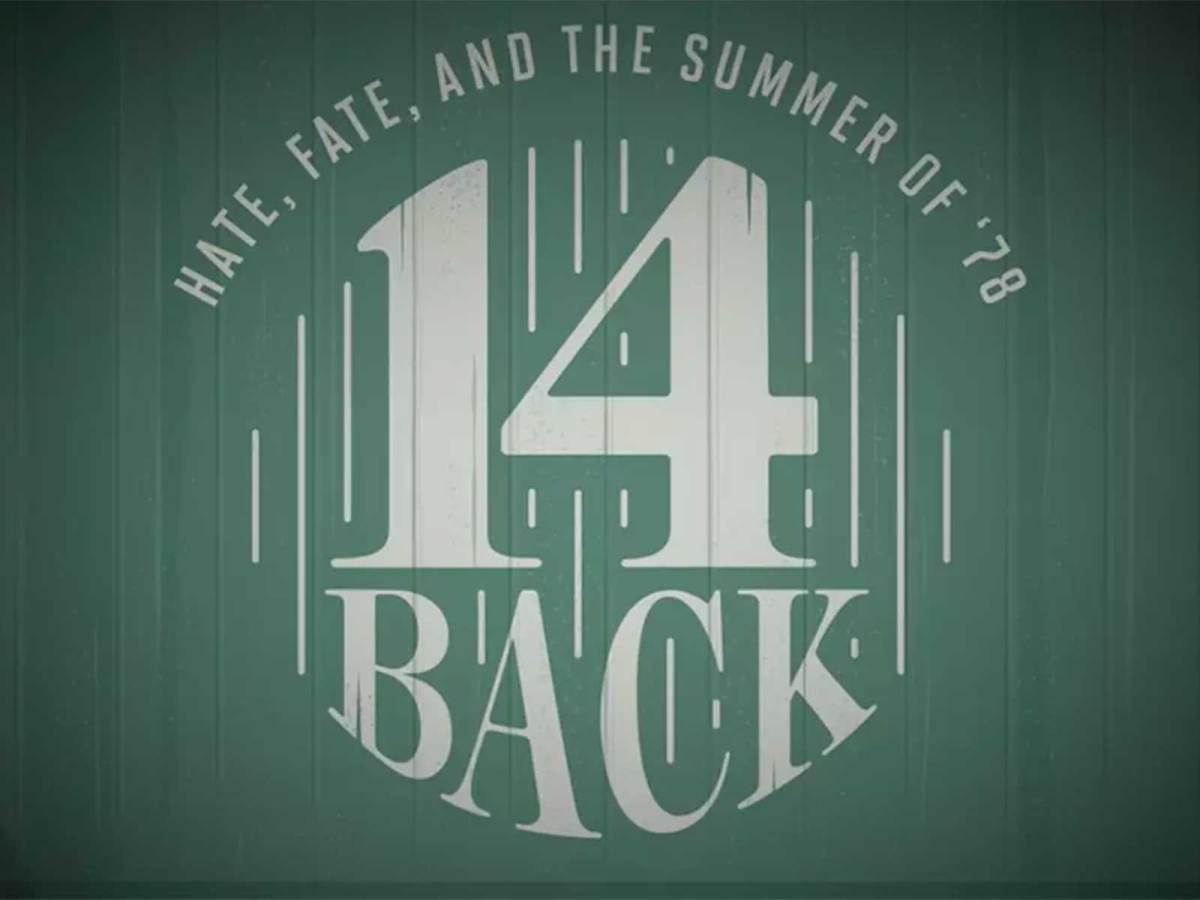
By Connor Grossman
This space has been exclusively reserved all season to revisit some of SI's best baseball writing. That will hold true this week, however we won't be dipping into the SI Vault reserve. In honor of SI TV's terrific undertaking, '14 Back,' chronicling the Yankees' great comeback against the Red Sox in the Summer of '78, Tom Verducci penned a tremendous piece on the untold stories of baseball's greatest comeback. It pairs brilliantly with the documentary, which you can watch here if you're an SI TV subscriber.
Find Verducci's entire story here and enjoy the excerpt below.
Steinbrenner gathered reporters at the Bay Harbor Hotel, which he owned, on a cement deck overlooking a swimming pool. He ripped his team for losing a St. Patrick’s Day game to the Reds 9–2. “After seeing the inadequacies of a team that is supposed to be world champions, I think my complexion matches the other guys’ green uniforms,” the Boss bellowed. “We’re at a point where Billy better start bucking down on them or we won’t repeat.”
The Yankees were getting into tabloid shape. Sparky Lyle, the team’s ace reliever and the 1977 AL Cy Young Award winner, showed up late to camp after Steinbrenner signed another ace reliever, free agent Rich (Goose) Gossage. When Lyle did arrive at the airport, Steinbrenner hired the 100-piece Hollywood Hills High band to greet him with their rendition of “Pomp and Circumstance.” Two weeks later Lyle asked Steinbrenner to trade him.
The catcher and captain, Munson, came a day late, after asking to be dealt to the Indians so he could get away from Jackson and be closer to his Canton, Ohio, home. When Munson did show he announced, “I’m not talking to writers.” He ended his embargo long enough to allow one pitch-perfect line when a reporter asked him if he expected 1978 to be without the problems of ’77: “I’m an intelligent guy, but I’m not delirious yet.”
